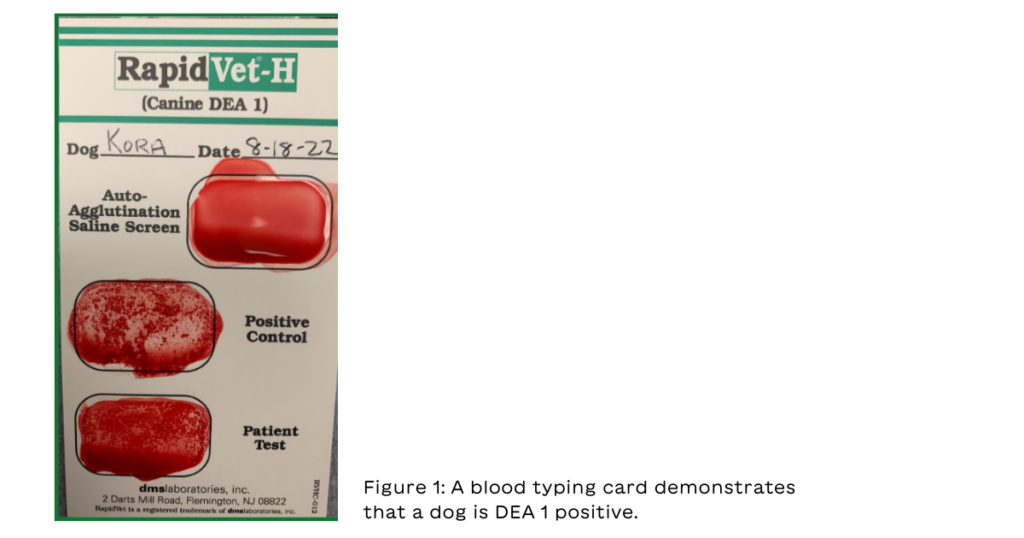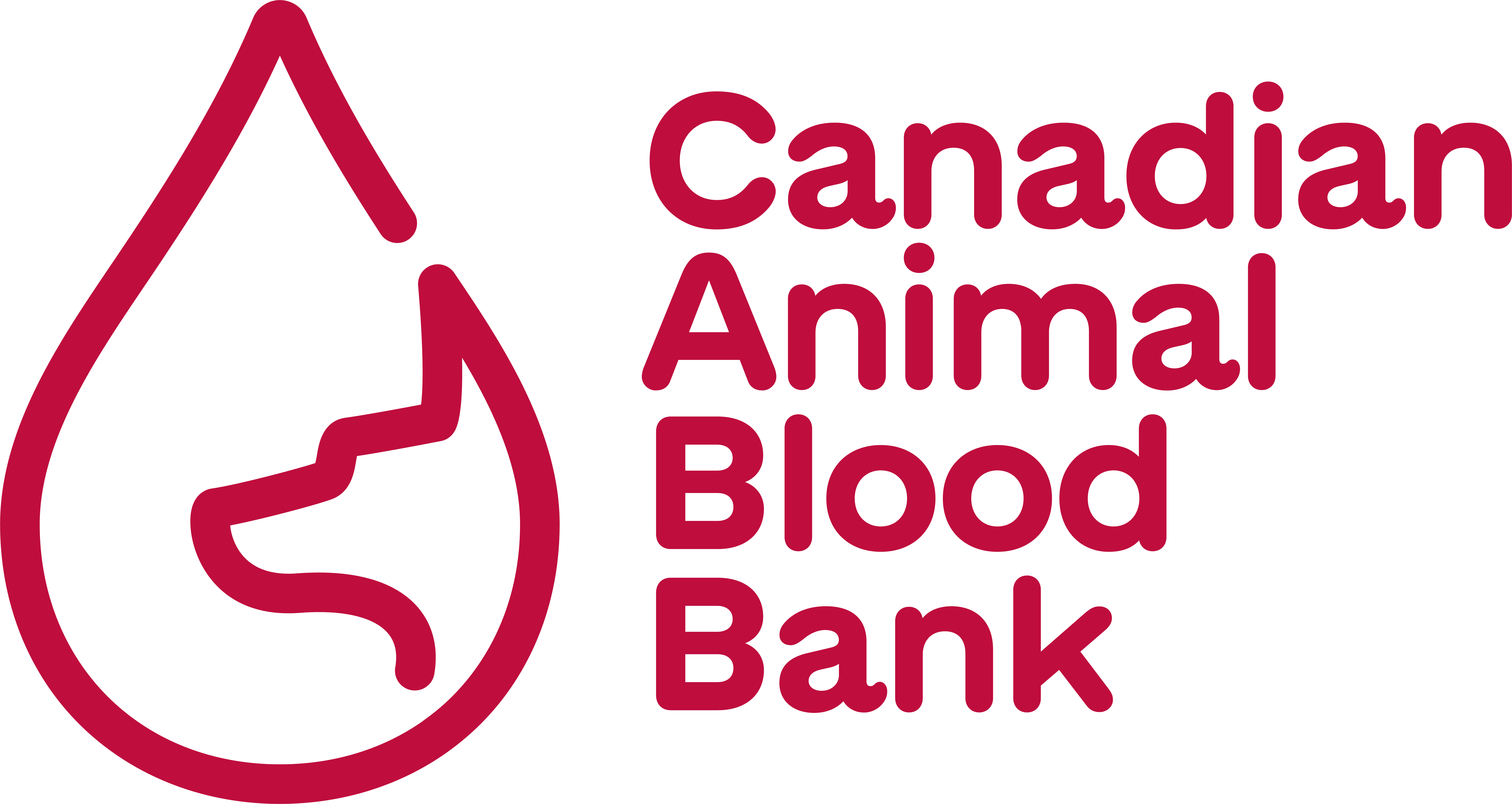
More than a dozen blood group systems have been identified in dogs over the last several decades, the most clinically important being dog erythrocyte antigen (DEA) 1. This is due to its strong antigenicity and because of its nearly 50:50 distribution of DEA 1+ and DEA 1- among most breeds around the world.
For years, cageside typing for DEA 1 has been available for dogs. Blood typing cards were introduced in the 1990s and began the ability to perform point-of-care DEA 1 typing in dogs. The cards are stored at room temperature and have lyophilized reagent on the patient test area. If agglutination is present, the dog is considered DEA 1 positive (Figure 1). Unfortunately, use of blood typing cards is inhibited by autoagglutination in certain patients (i.e., those with immune-mediated hemolytic anemia), which prevents accurate interpretation of the test.

More recently, an immunochromatographic test kit has become widely used in dogs for DEA 1 typing and relies on the migration of RBCs on a monoclonal antibody-containing membrane on an absorbent paper strip. RBCs with the corresponding antigen will form a visible line on the membrane to indicate the blood type (Figure 2).

Recent studies have documented that while both DEA 1 typing tests have good agreement with gel column test and flow cytometric methods (i.e., gold standard), the immunochromatographic cartridge method is slightly more accurate, especially in diseased dogs. This is particularly true for those with IMHA, since the immunochromatographic test is not heavily impacted by autoagglutination.
As the immunochromatographic method has become more widely used, reports of weakly DEA 1+ dogs have been shared (Figure 3). While most dogs are either DEA 1- or moderate to strongly DEA 1+, the few weakly DEA 1+ dogs warrant careful consideration as a misinterpretation of their DEA 1 type could have dire consequences for canine recipients.

A recent study investigated the alloimmunization of a DEA 1- dog transfused with weakly DEA 1+ positive blood. The authors concluded that:
- blood from a weakly DEA 1+ donor dog induced strong and sustained alloimmunization (> 4 years) in a DEA 1- recipient dog.
- all dogs should be typed for DEA 1 and weakly DEA 1+ dogs should be regarded as immunogenic to DEA 1- dogs.
Practically speaking, if you are recruiting a canine blood donor and you perform immunochromatographic DEA 1 testing that reveals a weakly positive result, that donor should be diagnosed as DEA 1+ and his/her blood only transfused to other confirmed DEA 1+ recipients.
This is because research demonstrates that if DEA 1- recipients are transfused blood from a weakly DEA 1+ donor that is, perhaps, misinterpreted or mislabeled as DEA 1-, the recipient will develop antibodies that could lead to future RBC incompatibilities, or worse, transfusion reactions.
In conclusion, based on recent research and the prevalence of weakly DEA 1+ dogs detected during canine donor screening, it is essential that blood donor programs consider all weakly DEA 1+ dogs to be DEA 1+ positive. This is best practice for ensuring that DEA 1- recipients are not exposed to weakly DEA 1+ blood, which results in antibody formation that will make subsequent crossmatches incompatible.
Written by Marie Holowaychuk, DVM, Dipl. ACVECC who is a volunteer member of the Canadian Animal Blood Bank Board and co-editor of the Manual of Veterinary Transfusion Medicine and Blood Banking. She also passionately advocates for the mental health and wellbeing of veterinary professionals (www.marieholowaychuk.com).

